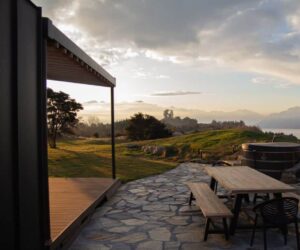10 Reasons to Bring Ya A** to Minnesota
Andrew.Parks
Fri, 05/31/2024 – 10:11
Now that we’ve got the attention of everyone from The New York Times to ESPN (thanks, Ant-Man!), we’d love to properly introduce you to the Star of the North.
Presenting “10 Reasons to Bring Ya A** to Minnesota”, no matter what time of the year it is.
And yes, that includes winter; no one does it better than us, whether you’re taking advantage of tax-free shopping at the Mall of America or deciding between dogsledding, snowmobiling and cross-country skiing on the state’s top-notch trails.
What To Read Next
Take a Sweet, Smoky Detour to These Minnesota Meat Shops
Read More
Essential Beer Festivals
Read More
Mexican Food Collective K’óoben Shares Its Top Spots For Soda, Birria and More
Read More
Get help from the experts to plan your trip
Want to know the best spots in Minnesota? How about tips on how to make the most of your time in a specific city? Our Minnesota experts can answer your questions, offer advice, or plan the perfect Minnesota trip for you. For free.
List
Andrew Parks
-
We’ve topped several Least Stressed State lists
A couple of glass artists at home in New Hope
/ Paul Vincent
We’ve topped several Least Stressed State listsMaybe it’s because of our Scandinavian roots, and the quality-of-life quotient of like-minded countries like Sweden, Norway and Finland, but Minnesotans have long understood the importance of a place’s sheer livability. It’s one thing to have a stellar restaurant scene (we’ll get to that in a second) — another to also value a healthy work/life balance and sorely overlooked stress factors like a lack of access to nature and sleep.
Just ask WalletHub; the personal finance company named Minnesota its Least Stressed State in 2023 and 2024. Meanwhile, U.S. News & World Report has Minnesota hovering within its Top 5 of the Best States Overall, proving we know how to work and play.
-
We put outdoor rec ops on a pedestal
A couple canoes in the Boundary Waters
/ Paul Vincent
We put outdoor rec ops on a pedestalAccording to the Trust for Public Land’s annual ParkScore report, 99% of Minneapolis and St. Paul residents live within a 10-minute walk of a park. The national average is only 76%, so it shouldn’t come as a surprise that the two cities are often trading places in the race for Best Park System.
Sprawling green spaces aren’t the only example of how Minnesota embraces the outdoors. We’re also home to a couple iconic spots (Voyageurs National Park, Boundary Waters Canoe Area Wilderness) for camping, hiking and staring at the stars, and offer a seemingly endless array of things to do in spring, summer, fall and winter.
Even biking is the very best here, whether you’re coasting across snowbanks or clearing trees.

Stone Arch Bridge
/ Paul Vincent









